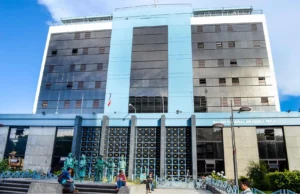
Costa Ricas Central Bank has lowered its main interest rate from 4% to 3.75% to make borrowing slightly cheaper and support a slowing economy.This move comes as the country faces unusual pressure: prices have not just slowed in growing, they have actually dropped.
In June 2025, official figures show inflation stood at -0.22%.While a slight drop in prices seems attractive, steady deflation signals weak demand and can hurt business investment and hiring.
Costa Ricas economy grew by 3.8% over the past year, but that is slower than the 5.1% growth seen the year before.The unemployment rate has ticked up from 6.9% to 7.5% since late 2024, according to government data.
These changes reflect softer demand for exports, fewer visitors in tourism, and the impact of bad weather on farming.Nearly half of bank deposits and most big loans in Costa Rica are held in U.S.
dollars, not the local currency.
This partial dollarization means any change in global conditions or American interest rates quickly affects households and businesses in Costa Rica.Costa Rica Cuts Rates as Economy Faces Deflation and Fragile Growth.(Photo Internet reproduction)More than a third of the countrys annual economic output comes from loans regulated by official lenders, which makes the financial system sensitive.Costa Ricas Fragile Growth Tested by Climate RisksCosta Rica also faces real climate risks: the majority of people and business assets are in areas threatened by floods and natural disasters, according to the World Bank.These risks can damage growth and make the economy more fragile.
The Central Bank insists that lowering interest rates is meant to balance current deflation, encourage lending, and keep business activity going.Every step by the Bank is closely watched, because even small changes in rates or inflation move through the deeply connected economy.
Business leaders and households are keeping a close eye on what happens next, hoping for stability and relief from mounting pressures.

 20
20







